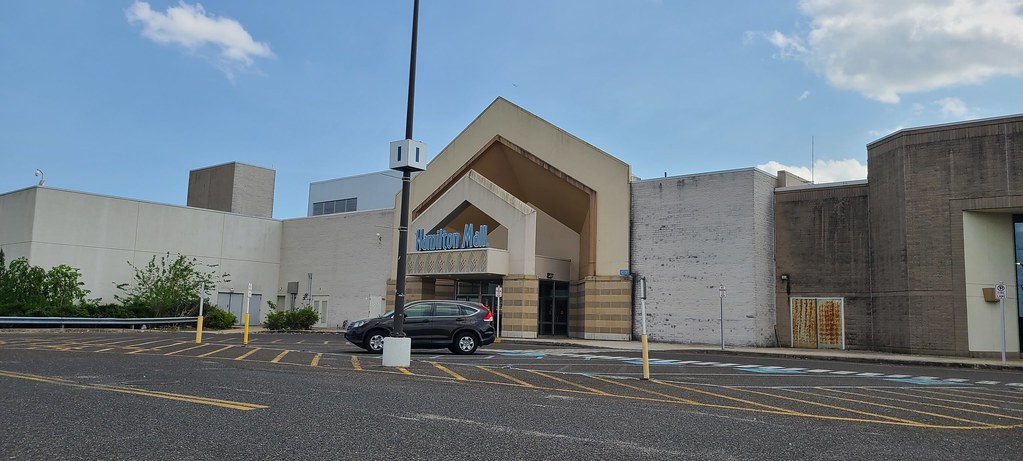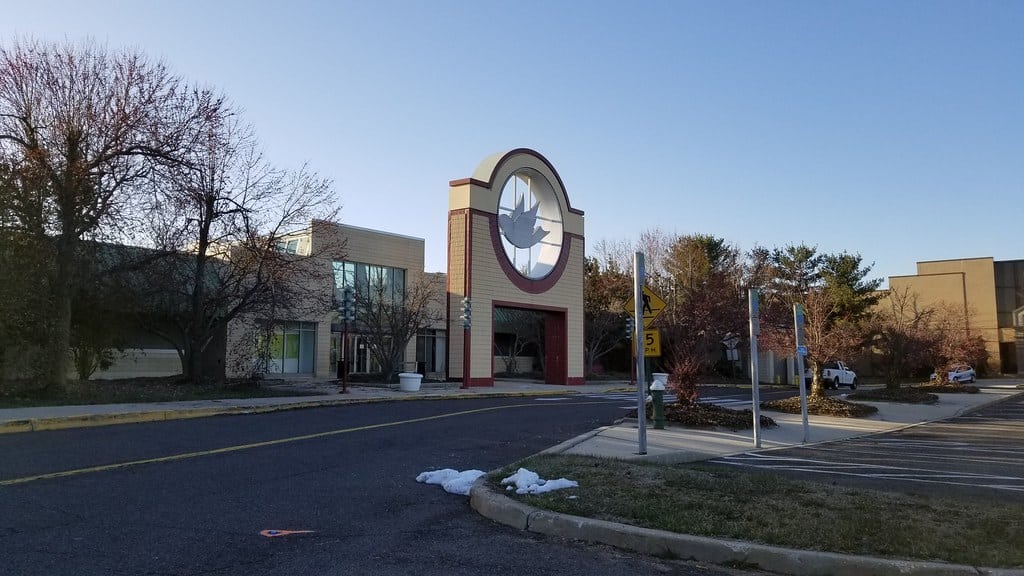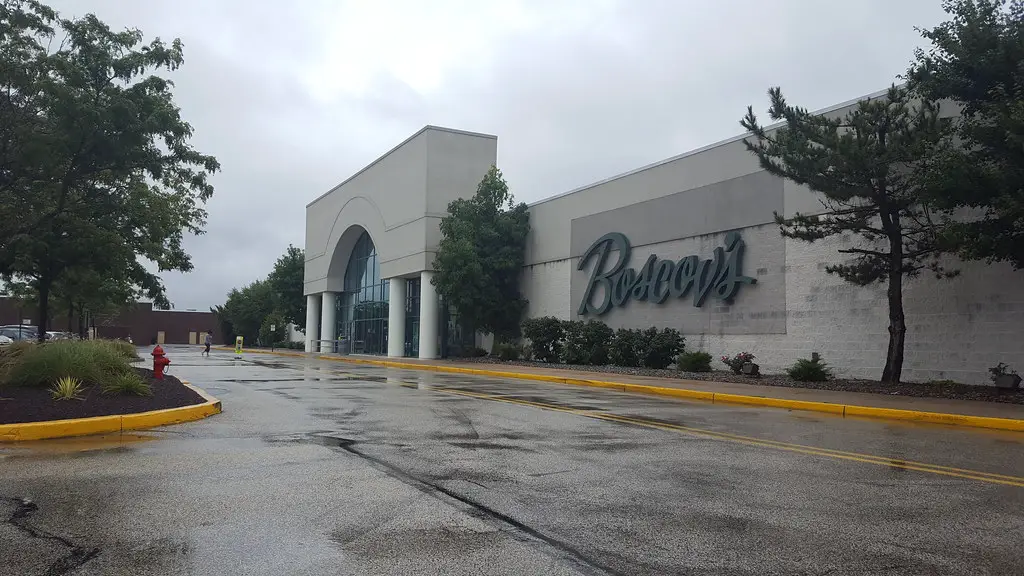The Birth of Garden State Plaza
Garden State Plaza‘s journey began in the early 1950s, at a time when suburban shopping centers were a new concept. In 1954, R.H. Macy, one of the most well-known retailers in the country, announced plans to create what would become the first suburban mall in New Jersey.
Located at the intersection of Route 4 and Route 17 in Paramus, the mall aimed to transform how people shopped in the growing suburban areas.
Its strategic position, just 15 miles from New York City, made it an attractive option for shoppers from both New Jersey and neighboring New York.
When Garden State Plaza officially opened its doors on May 1, 1957, it was a one-of-a-kind development. Bamberger’s, another key retail company at the time, became the mall’s primary anchor store.
Alongside it were around 60 specialty stores spread across 110 acres of land—an impressive feat for a retail complex in the 1950s.
The layout, an open-air plaza, was designed to accommodate shoppers who arrived by car. It offered 5,500 parking spaces, which was crucial as suburban life revolved around driving.
One of the defining moments of the mall’s opening was the massive crowd it drew—75,000 shoppers flocked to the center on its first day.
The grand opening featured a unique ribbon-cutting ceremony led by the mayor of Paramus, Fred C. Galda, and a young resident. This wasn’t just about shopping; it was about creating a community experience.
Garden State Plaza quickly became a destination not only for Paramus residents but also for those in surrounding areas. Thanks to New Jersey’s lower sales tax and clothing tax exemptions, it even lured shoppers from across state lines.
It helped define things to do in Paramus, New Jersey, especially for families looking for an all-day shopping adventure.
The launch of the Garden State Plaza set a new standard in retail and would shape the future of shopping in the region.
Its development also sparked interest in nearby competitors, with Allied Stores constructing the Bergen Mall less than a mile away, which opened a few months later. From the very start, Garden State Plaza became a key player in the growing world of suburban commerce.

Expansion and Evolution
By the 1970s, Garden State Plaza had already established itself as a retail powerhouse, but it was clear that the mall needed to evolve to stay ahead.
In 1975, plans were set in motion to enclose the once open-air center fully. This multi-phased project, aimed at modernizing the space, stretched over several years and transformed the shopping experience for visitors.
The project, which cost $20 million, added 400,000 square feet of retail space. By 1984, the mall was completely enclosed, creating a climate-controlled environment that protected shoppers from the elements—a trend other malls in the area, like Willowbrook Mall in Wayne, had already adopted.
A $21 million project in 1981 also created a second level for the mall by converting access tunnels into additional retail space. This new level added 150,000 square feet of stores, which allowed the mall to accommodate more retailers and larger crowds.
One quirky addition came when the JCPenney basement received its entrance on the lower level, which led to the installation of the shortest escalator in North America, standing at just six steps.
As competition from newer shopping centers grew, Garden State Plaza recognized the need to attract high-end shoppers. In 1990, Nordstrom opened its first New Jersey location at the mall.
The three-level store, costing $37 million to build, brought luxury shopping to the Plaza, marking the beginning of a new chapter in the mall’s history.
A Beacon of Retail Success
Throughout the 1990s and into the 2000s, Garden State Plaza cemented its place as a leader in the retail industry. The mall underwent a massive renovation in 1996, spending $200 million to add over 700,000 square feet of new space.
This expansion included a pair of four-level parking structures, ensuring that visitors could easily access the growing number of stores.
The mall’s upscale feel continued with the addition of Neiman Marcus, a 150,000-square-foot store targeting the luxury market, and a 135,000-square-foot Lord & Taylor.
The 1996 renovation wasn’t just about adding more space—it was about creating an experience. The mall introduced a downstairs food court that became a popular destination for shoppers looking for a bite to eat.
During this period, the mall also added a Venetian carousel in front of Macy’s, a feature that drew families and created a more festive atmosphere for shoppers. Though the carousel was eventually removed in 2016, it remained a beloved part of Garden State Plaza’s history.
By the early 2010s, Garden State Plaza had positioned itself as one of the top-performing malls in the country. In 2013, it was bringing in an impressive $775 per square foot in sales, far above the national average.
Retailers flocked to the mall because it draws shoppers from across the region, especially from nearby New York City.

A Hub of Transformation
In 2013, the mall embarked on another expansion, this time focusing on the high-end shopping experience. This $160 million project introduced a new wing called the Fashion District.
Spanning 55,000 square feet, the Fashion District featured 22 stores and restaurants catering to the tastes of luxury consumers. The addition was part of a broader strategy to keep the mall competitive as online shopping grew in popularity.
But retail wasn’t the only focus. Garden State Plaza began to explore ways to transform itself into more than just a shopping destination.
In 2019, the mall’s owners announced plans to convert parts of its massive parking lot into a mixed-use complex. The vision included residential units, outdoor dining spaces, and areas for community events, creating a “downtown” feel in the heart of Paramus.
This transformation would add value to the mall by turning it into a place where people could live, work, and play, blending retail with urban-style living.
Despite the ambitious plans, Garden State Plaza still faced challenges. In 2020, Lord & Taylor—one of the mall’s long-standing anchors—closed its doors as part of a chain-wide shutdown.
This marked the end of an era for the mall, as Lord & Taylor had been a major player in its evolution since the 1990s. While the closure was a setback, it also created an opportunity for redevelopment and new retail concepts in the space.
New Developments and Community Events at Garden State Plaza
Garden State Plaza is nearing a major expansion that will transform part of its vast parking lot into a residential and mixed-use space.
Scheduled to break ground in 2025, this ambitious project will add 1,400 residential units to the mall’s footprint. It will feature two five-story buildings, offering 575 housing units in the first phase and 50,000 square feet of new retail space.
The redevelopment includes the creation of a 1-acre “town green” designed for community events like farmers markets, art fairs, and holiday gatherings. This space aims to become Paramus’s new “downtown,” creating a vibrant area that encourages social interaction, outdoor dining, and open-air shopping.
In future phases, the project will add a senior living facility, a medical office building, and a hotel. Each phase is designed to integrate retail, residential, and community spaces, setting the stage for a modern mixed-use environment.
In addition to its commercial transformation, Garden State Plaza remains a popular spot for community events. In July 2024, the mall hosted the L.E.A.D. Summerfest Carnival.
Running through late July, the carnival brought classic rides like the Super Himalaya, game booths, and live performances to the mall’s parking lot, drawing in families from across the region.

With rides, games, and performances, the carnival provided a summer escape for local families while supporting L.E.A.D.’s mission to educate communities on the dangers of drug use and violence.
In September 2024, Garden State Plaza will once again be home to the annual Bergen County Food & Wine Festival, a key event for food lovers in the region.
Hosted by the 200 Club of Bergen County, this festival not only celebrates local cuisine but also supports first responders and their families.
Nearly three dozen local restaurants will showcase their best dishes under tents in the mall’s western parking lot, providing visitors with a unique opportunity to sample a variety of cuisines.
In addition to food tastings, the festival will feature local breweries, wineries, and distilleries offering samples of craft beer, wine, and spirits. Live entertainment, such as DJs and dancing, will ensure that there’s something for everyone to enjoy.









